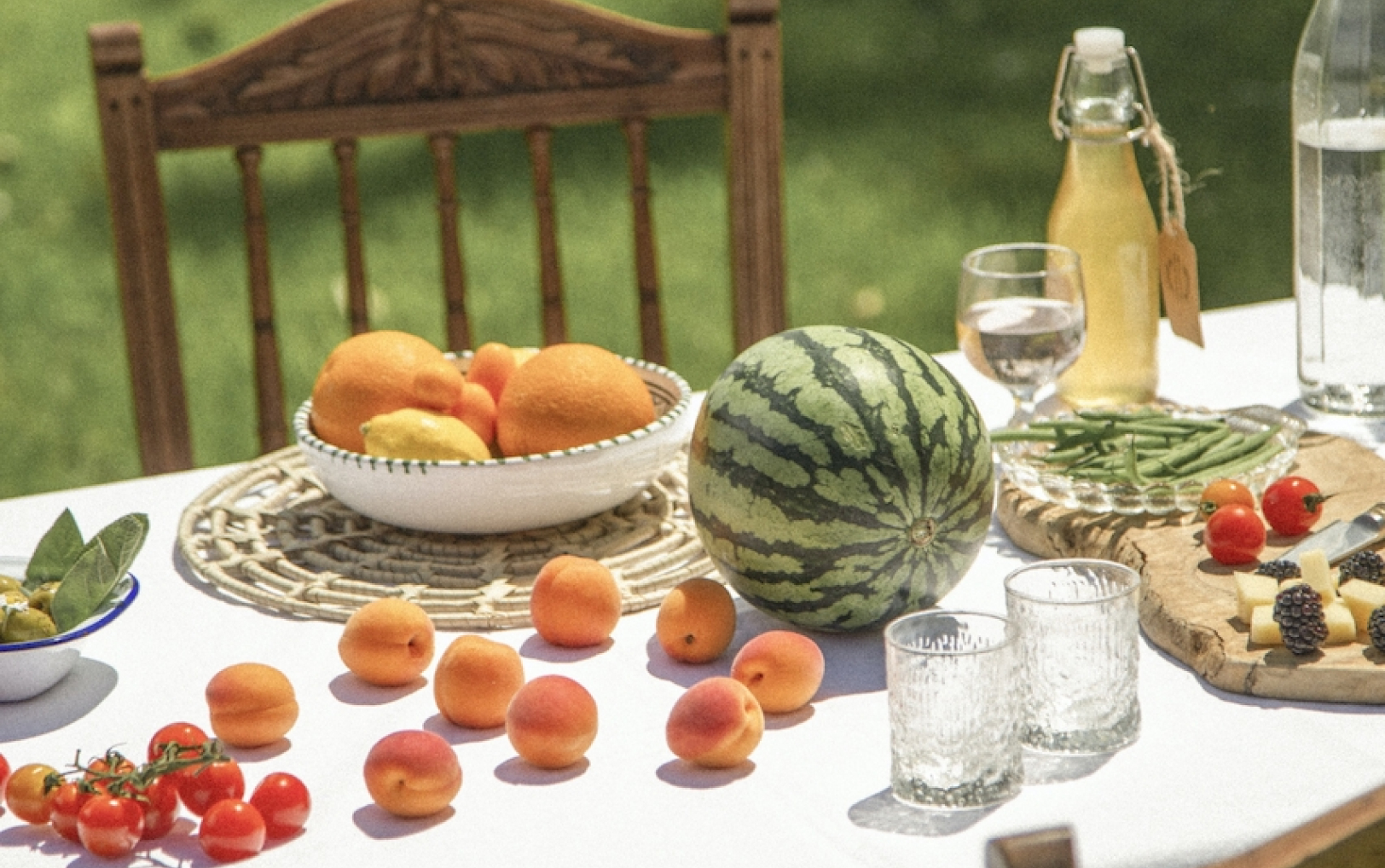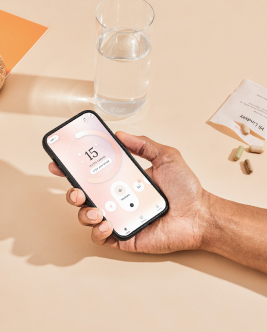nutrition
15 Ways to Get More Fiber in Your Diet
On This Page

Who can’t benefit from a diet that’s high in fiber? Here’s 15 ways to easily add more fiber in healthy, tasty ways.
In these days of processed foods and high-protein diets, doctor’s orders often encourage eating more fiber. But not everyone may know why, or more importantly, how, to do so.
Dietary fiber is essential for a healthy digestive system. It feeds your gut bacteria (microbiota), aids in digestion, normalizes bowel movements, increases satiety, and has many other health benefits, such as controlling blood sugar levels (already in normal range), weight management, and maintaining healthy cholesterol levels already in normal range.
Unlike fats, proteins, and carbohydrates, fiber is not digested by the body, instead it passesthrough the entire digestive system relatively intact, until it exits the body. There are many types of dietary fibers that come from a large number of plant foods, but there are two overall major categories: soluble and insoluble.
Soluble fiber dissolves in water and helps maintain healthy blood sugar and cholesterol levels already in normal range. It can be found in foods such as oatmeal, chia seeds, beans, nuts, lentils, apples, and blueberries.
Insoluble fiber does not dissolve in water; instead it helps food move through the digestive system, promoting regular bowel movements. Sources of insoluble fiber include brown rice, grains, legumes, leafy greens, almonds, walnuts, nuts, seeds, and fruit with edible skins.
The general recommendation for fiber is approximately 25g/day for women, 38g/day for men, and an all gender recommendation of 14g/1000 calories consumed. It is important not to focus on any one particular type of fiber, instead eating a wide variety of plant foods including fruit, vegetables, legumes, nuts, seeds, and whole grains in order to reach the recommended intake.
Go slowly when adding fiber to your diet as too much, too quickly may cause temporary abdominal bloating, cramping, and gas. By increasing fiber in your diet in moderation over a period of several weeks, you allow the natural bacteria in your digestive system to adjust accordingly. Fiber works best when it absorbs water, so as you are increasing your intake, drink plenty of water and remain hydrated.
Eat Popcorn
Popcorn is one of the best snacks you can eat if you’re looking to increase fiber. A 3-cup serving of air-popped popcorn has about 100 calories and 4 grams of fiber. Given that the general recommendation of fiber intake is 25-38g/daily depending upon gender, popcorn provides around 10-15% of your daily intake. Remember that all popcorn is not the same. Microwave buttered popcorn has 140 calories, 10 grams of fat, and 280 milligrams of sodium per serving. Movie theater popcorn can range from 400 to 1,200 calories, 13-48 grams of fat, and 1,500 milligrams of sodium, depending upon the portion size. Get creative with light flavors and spices, and stick with the air-popped popcorn for a delicious, fiber-rich snack.
Eat More Fruit
At 4.5 grams/serving, a medium-sized apple a day will make an impressive dent in your daily fiber requirement. Raspberries top the list of high-fiber fruits, however, with approximately 8 grams/serving, though they are hardly the only good choices. Mangoes, figs, strawberries, pears, pomegranates, kiwi, passionfruit, oranges, and grapefruits are all also excellent sources of dietary fiber. And they’re perfect as a stand alone snack, a great addition to yogurt, or perfect as a post-meal treat instead of dessert. If it’s fiber you’re after, it’s always better to eat your fruit than drink it as juice.
Choose Whole Grains
Fiber is plentiful in 100% whole wheat bread, whole wheat pasta, brown rice, whole cornmeal, polenta, whole wheat couscous, spelt, steel-cut oats, and rolled oats. But buyer beware: The Food and Drug Administration (FDA) requires that whole grains be the first ingredient on a food package in order for it to be considered a real whole grain. Read your labels carefully.
Take a Fiber Supplement
If you are experiencing temporary constipation or any bowel movement challenges, you should talk to your doctor. Your doctor may ask you about your fiber intake. If you have challenges getting the recommended amount of fiber in your daily diet, a supplement may be suggested by your doctor or nutritionist. Care/of has an article Supplements for Digestive Health that contains information about fiber supplements. There are shelves full of fiber supplements at your local retailers. Always talk to your doctor before adding any supplement into your regimen.
Eat Chia Seeds
Chia Seeds are considered a superfood because they are rich in fiber, minerals, omega-3s, and antioxidants. When combined with lemon and water, they make a very popular nutrient drink, chia seed water. They can also be eaten raw, included in smoothies and baked goods, or sprinkled on cereal or yogurt. Care/of has a premium blend of flax and chia seeds, The Fiber Starters.
Add More Veggies to Meals
One of the easiest ways to add more fiber to your diet is through vegetables. A big salad with fiber-rich, nutrient-dense greens like kale, spinach, or arugula is always a good way to start a meal. Add some plant-based protein, avocado, nuts, and seeds, and it becomes the meal. Don’t forget sides like broccoli, cauliflower, bok choy, cabbage, Brussel sprouts, radishes, carrots, and collard greens. Adding vegetables is a healthy, delicious, and rather easy way to get more fiber in your diet.
Don't Peel Potatoes
If you eat a medium potato without the skin, you get about 3 grams of fiber. If you eat it with the skin, you get 4 grams of fiber plus additional amounts of vitamins B6, C, and niacin, as well as potassium, and iron. Eat the peel - it’s good for you.
Eat the Skins of Apples
If you don’t eat the skin of the apple, you will lose a significant amount of the fiber, the majority of the apple’s healthy phytochemicals, and some fairly important nutrients. A medium unpeeled apple has nearly twice the fiber, 40 percent more vitamin A, and 25 percent more potassium than a peeled apple according to the US Department of Agriculture’s National Nutrient Database. The peel also contains approximately 70 percent of the fruit’s antioxidant vitamin E, and bone-building vitamin K. It also contains nearly half of the apple’s total iron and all of its folate.
Add Nuts and Seeds to Recipes
Adding nuts and seeds to your diet is a simple way to add fiber, texture, minerals such as magnesium, potassium, calcium, selenium, and zinc, as well as vitamins B1, B2, B3, and E. Keep within the serving guidelines of an ounce or two per day, eat only the ones you like, and you can easily add extra flavor and health benefits to any meal. Although peanuts, cashews, and almonds do not fit the textbook definition of a nut, they do make healthy, nutrient-dense, fiber-rich additions to any recipe.
Eat Avocados
There’s a reason avocado consumption in the United States has soared over the last two decades. They’re not only delicious, but they’re very healthy too. According to the USDA, one avocado contains approximately 13.5 grams of fiber, which is nearly half the Dietary Guidelines for American’s recommended 28 to 34 grams of fiber per day. Surely you can find room for an avocado most any day. Let’s not forget that they’re great on toast, perfect with salads, and the key ingredient to guacamole. And who doesn’t love a good guacamole?
Oatmeal for Breakfast
Oatmeal is probably the go-to breakfast for those seeking a nutritious, fiber-rich, heart-healthy meal to start the day. One half of a cup of oatmeal contains approximately 4 grams of fiber. Good? Yes. But if you want to get more fiber in your morning meal, toss in some blueberries, Brazil nuts, walnuts, banana, almonds, nut butters, sunflower seeds, chia seeds, or flaxseed and you can have a delicious fiber extravaganza.
Add Legumes to Meals
Navy beans, black beans, pinto beans, chickpeas, lima beans, soybeans, lentils, mung beans, and adzuki beans can go a long way in getting you to your daily requirement of fiber. Healthy, nutritious, vegan-friendly legumes can add as much as 10 grams of fiber per serving, depending upon the legume you select. Try substituting them for meat in two meals per week. And you can put them in salads, make enchiladas, or combine them with rice for a complete protein, and, of course, make a delicious hummus for any occasion. And don’t forget that the peanut is a legume too.
Eat Berries
Berries with seeds are among the most fiber-rich fruits, with raspberries topping the list at nearly 8 grams per cup. Blackberries come a close second at nearly 8 grams, while the superfood known as the blueberry contains 4 grams of fiber per cup. Delicious, fresh, berries are the perfect topping for yogurt, ice cream, and pretty much any dessert with whipped cream. They’re also delicious in any fruit salad, or on their own, eaten right out of the bowl.
Whole Food Carbs
Not all carbs are bad carbs. When you’re looking to add fiber to your diet, don’t forget about whole food carbs. Vegetables, quinoa, legumes, potatoes, whole grains, oats, beans, and quinoa are all examples of whole food carbs, foods that are minimally processed and still contain the fiber found naturally in the food.
Switch to Brown Rice
One cup of cooked, long-grain brown rice contains approximately 3.2 grams of fiber. One cup of cooked white rice contains approximately 1.2 grams of fiber. Just for the added fiber alone, you might want to make the switch.



